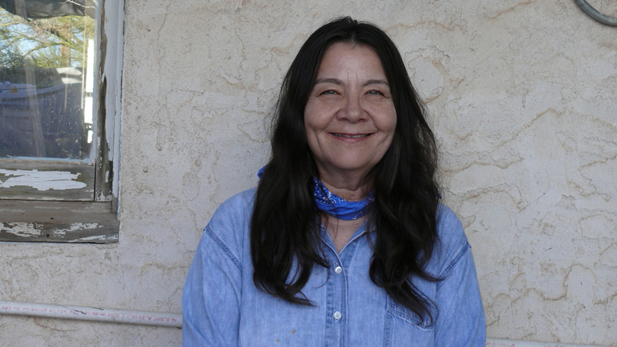
Laguna Pueblo writer Leslie Marmon Silko was born in 1948 in Albuquerque, New Mexico. She identifies as an Anglo American and Mexican American, noting that she is ¼ Laguna Pueblo, a Native American tribe predominantly located along the Rio San Jose in west-central New Mexico.
Growing up along the border of the Laguna Pueblo reservation provided Silko with the insight and drive to infuse her writing with her family’s rich history. She attended school at the Laguna BIA (Bureau of Indian Affairs) School and the Albuquerque Indian School. In 1969, she graduated from the University of New Mexico and dabbled in law school at the same university before dedicating her time to literature.
Silko published her first poetry collection Laguna Woman in 1974. She gained attention for her short story called “The Man to Send Rain Clouds,” which went on to win the National Endowment for the Humanities Discovery Grant. As the Poetry Foundation explains, Silko is known for “her lyric treatment of Native American subjects.”
Her 1977 novel Ceremony is her most acclaimed novel. The story follows a part-Laguna WWII veteran as he combats the painful memories of wartime. Silko relies heavily on the oral traditions and practices of both the Navajo and Pueblo people throughout this story.
Almanac of the Dead was Silko’s second book, publishing in 1991 after 10 years of writing and researching. The almost 800-page novel received mixed reviews for the depth of the interwoven plots and the breadth of characters. But in an interview, Silko explained that “in the Native American community people love this book, it gives them hope. When I started out in 1981 I had no idea it would be a statement against capitalism.”
In the same interview, Silko also thinks back to the idea that “almanacs, not just the Native American Mayan almanacs but also Western Europeans almanacs or medicine almanacs in the U.S. have many little, many different sections. All of a sudden I became aware of, yes, what needed to be done was many, many chapters so that the chapter headings themselves could tell a story or express something.”
Silko’s writings and career have made her an influential person among the Native American Renaissance, categorized by the insurgence of literature written by Native Americans is the late 1960s. Recently, in 2010, she released her memoir The Turquoise Ledge in 2010. In an LA Times review, they explain that she “writes in the language of spirit—reading her words…is not only like being inside her head, it is like eavesdropping on her silent conversations with her gods.”
Leslie Marmon Silko has given a voice to the Laguna Pueblo people, a voice that will continue to carry through generations of Native American (and non-Native American) peoples: “I will tell you something about stories. They aren’t just entertainment. They are all we have to fight off illness and death. You don’t have anything if you don’t have stories.”